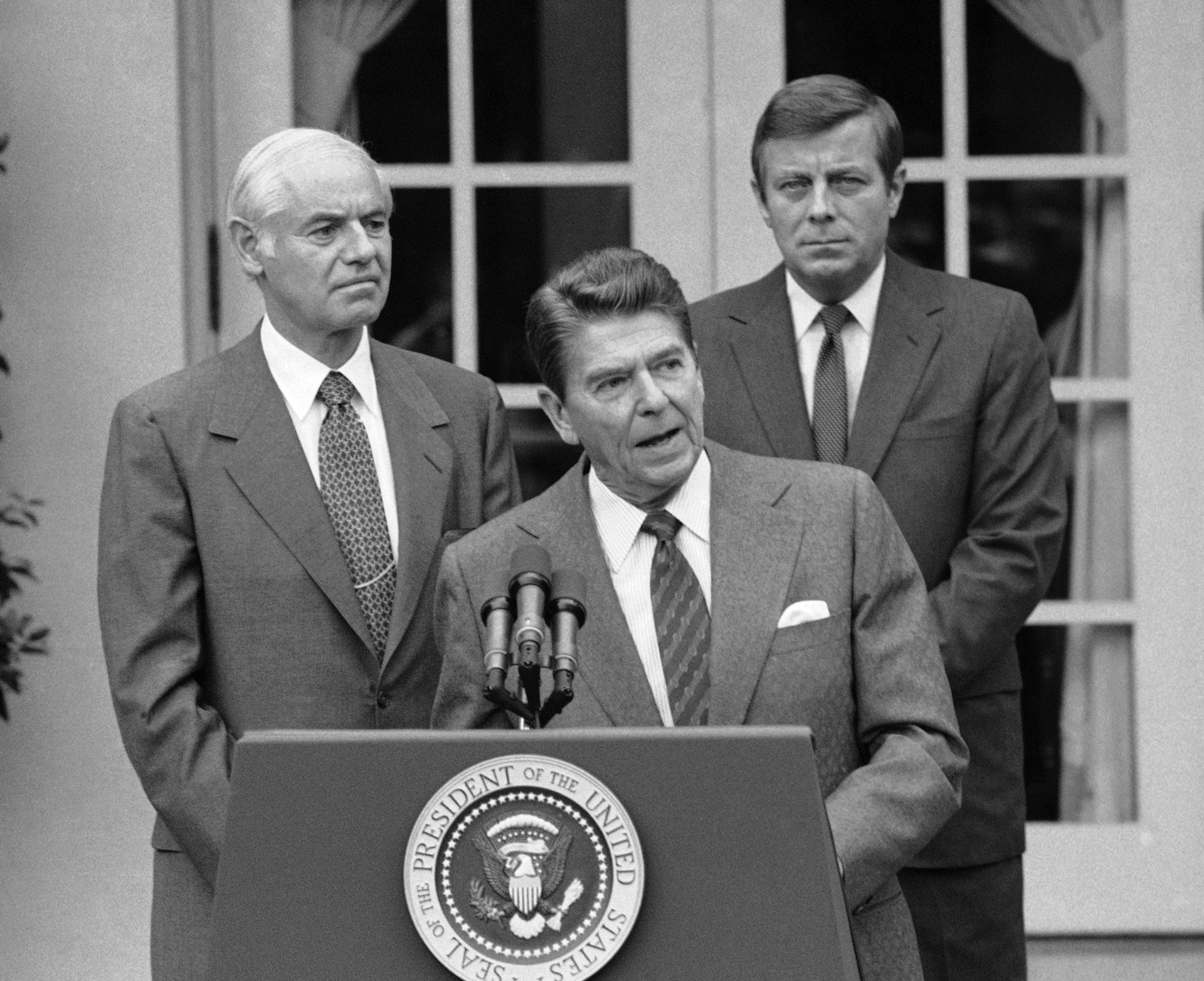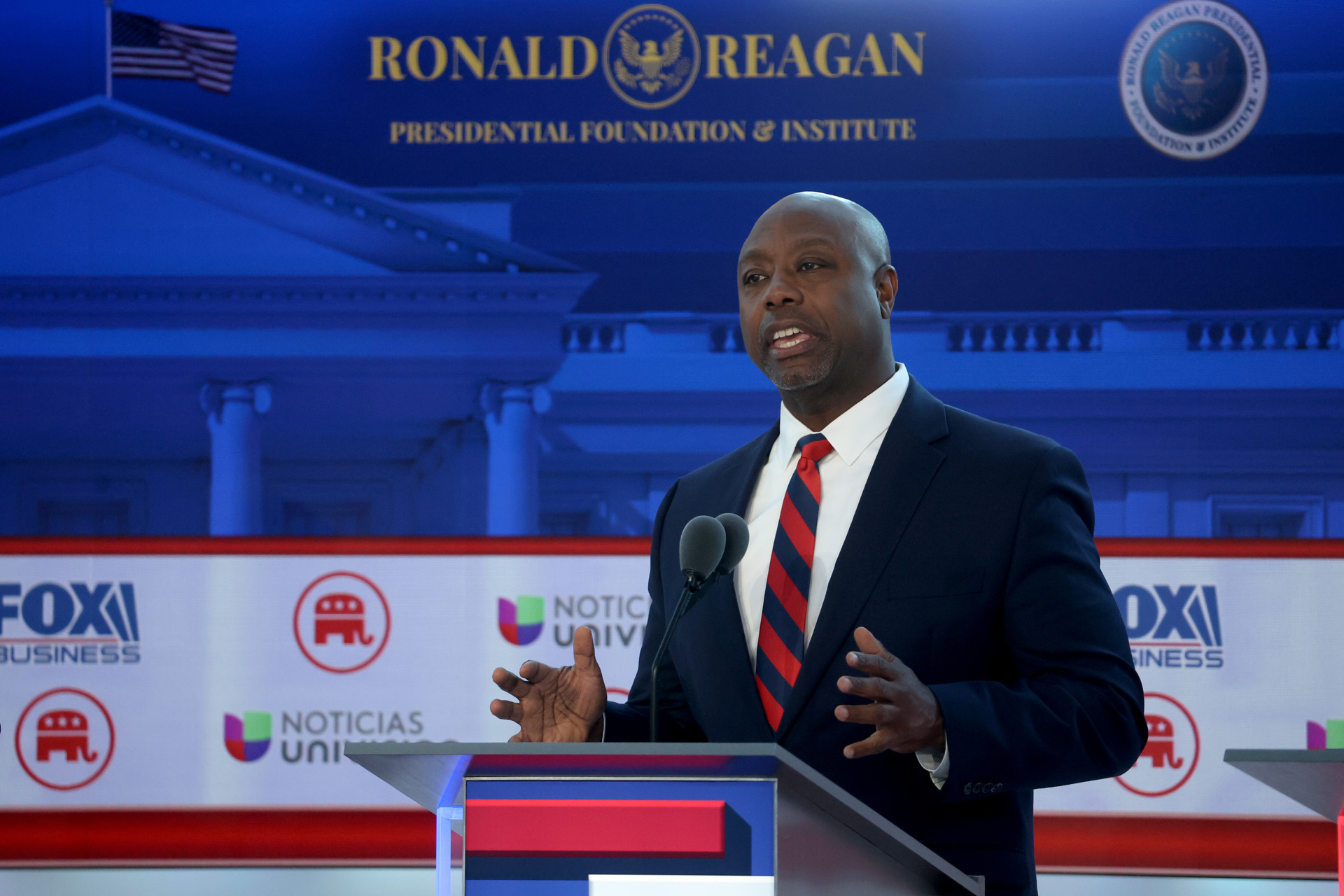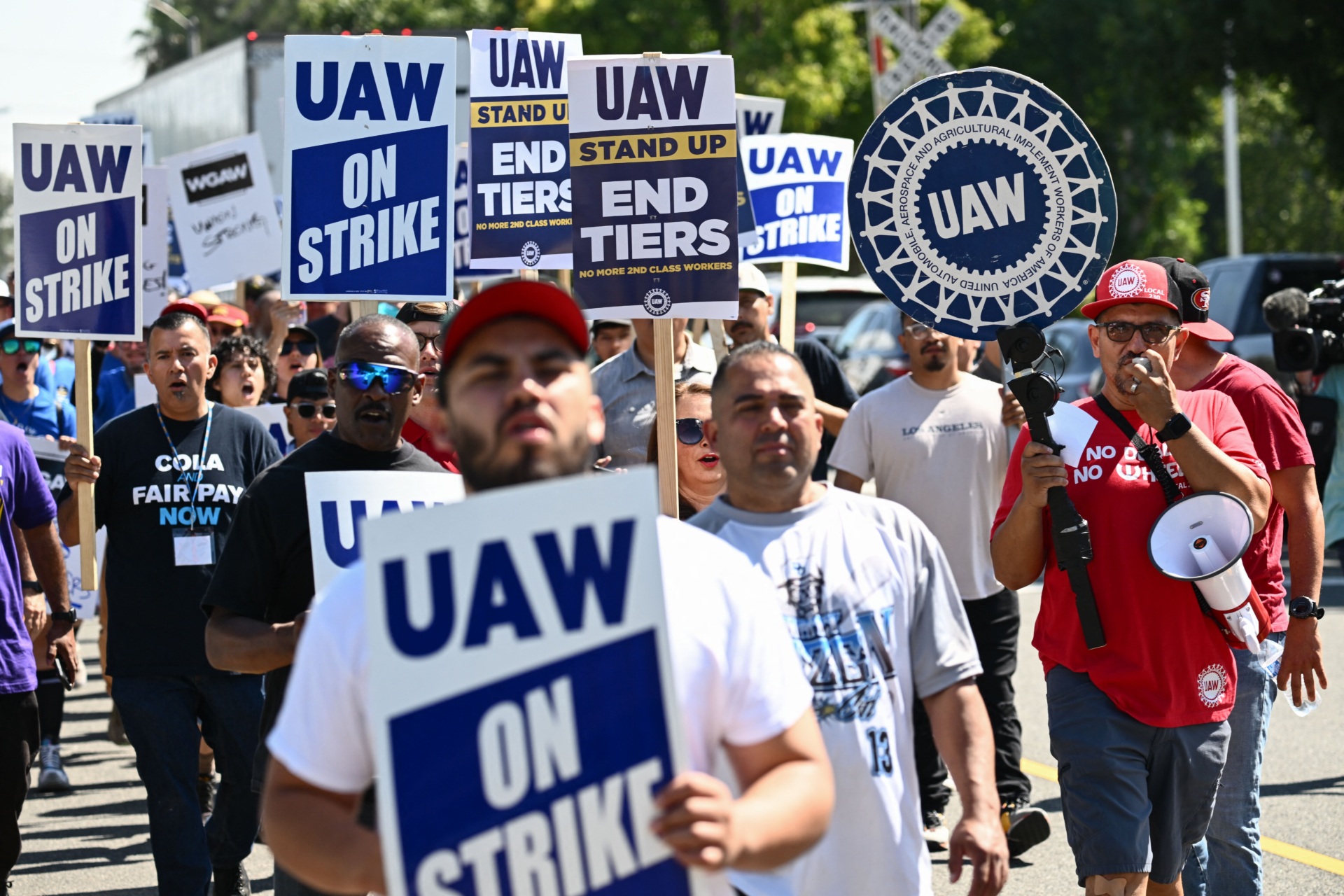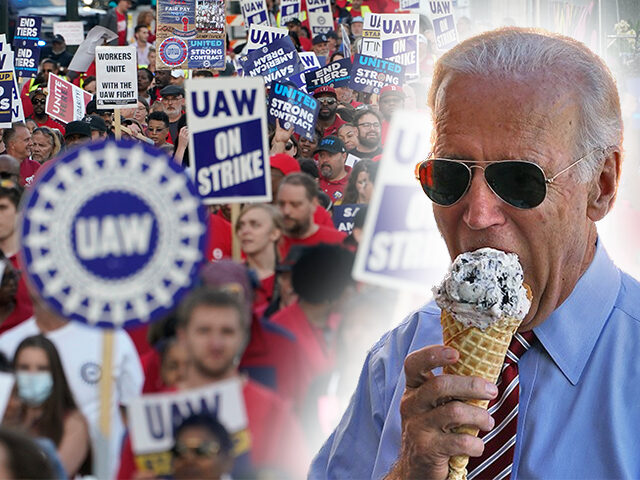Reagan, Air Traffic Controllers, and the UAW
The opening of the Republican debate at the Ronald Reagan presidential library was marred last night by the belligerently anti-union rhetoric of Sen. Tim Scott (R-SC).
Stuart Varney of Fox Business Network, one of the debate moderators, opened with an inquiry into the story that Scott had bought up Ronald Reagan’s monumental decision to fire the striking air traffic controllers in 1981.
“Ronald Reagan gave us a great example when federal employees decided they were going to strike,” Scott said at a campaign event in Iowa earlier this month. “He said, ‘You strike, you’re fired.’ Simple concept to me.”
As we explained earlier this week, this was not a very “great example” for how a Republican president should respond to a union’s strike. The air traffic controllers were not on strike against a private employer, negotiating over the share of an enterprise’s revenues. They were in negotiations with the Federal Aviation Administration over how much taxpayer funds should be used to compensate them.
What’s more, their strike was in breach of a law banning strikes by federal workers. Reagan ordered them back to work under authorities granted to the president under the Taft-Harley Act. A federal court issued an injunction, requiring the controllers to return to work. It was only after this that Reagan fired the controllers who refused to return to work.
Notably, Reagan campaigned in favor of the air traffic controllers—and they in turn endorsed him. This was a break with expectations that the union would endorse the Democratic incumbent, Jimmy Carter. He only turned to the measure of firing them when their leadership and much of the membership persisted on carrying on an illegal strike in defiance of orders from the executive and judicial branches. In a sense, they forced Reagan to choose between the rule of law and favoritism for a group that had supported his candidacy. Reagan chose rule of law.

President Ronald Reagan, flanked by Attorney General William French Smith, left, and Transportation Secretary Drew Lewis, speaks about the striking air traffic controllers during a briefing in the White House Rose Garden on Aug. 3, 1981. (AP Photo/Jeff Taylor)
There’s a very big difference between private-sector unions and public-sector unions. Labor negotiations between private sector unions and private sector employers involve two collectives who are each pursuing both a mutual interest and competing interests. The mutual interest is the continued success of the business, which provides income to workers and profits to investors. The workers are represented by their union leadership and the investors by company management. The competing interest is over a share of the revenue of the business.
Public sector unions are very different because there is no one that is the equivalent of investors and no enterprise whose success can be undermined by driving costs too high. Instead, there are taxpayers whose earnings are taxed to support the public sector workers. The politicians are not on the “other side” of the table from the workers but more likely to be on the same side of the workers since their jobs are not endangered by the failure of the business due to escalating costs.
Scott Doubles Down
Scott’s reply began reasonably enough.
“Obviously the president of the United States cannot fire anyone in the private sector,” he said.
He could have left it at that. Even better, he could have pivoted to pointing out that the massive surge of inflation that beset the economy during the Biden administration was the main cause of the union’s pursuit of a large wage increase. Inflation does more than just increase the cost of living—it creates economic chaos by undermining contractual precedents and expectations.

Republican presidential candidate Sen. Tim Scott (R-SC) speaks during the GOP primary debate at the Ronald Reagan Presidential Library on September 27, 2023, in Simi Valley, California. (Justin Sullivan/Getty Images)
Instead, Scott engaged in what’s known as “but bombing.” He followed up a conciliatory remark with an escalation of the attack.
“One of the challenges we have in the current negotiations is that they want four-day, French work weeks but more money. They want more benefits, working fewer hours. That is simply not going to stand,” Scott said.
This is literally belligerent, a word derived from the Latin belligerant, which means to “wage war.” The root is bellum or war. To anyone familiar with modern American political rhetoric, the declaration that the UAW union’s offer on wages and hours “is simply not going to stand” echoes George H.W. Bush’s declaration that Saddam Hussein’s invasion of Kuwait would “not stand.”
It raises almost the same question as Scott’s earlier faulty recollection of Reagan’s action in 1981 did. Why should a presidential candidate offer an opinion on the reasonableness of the terms being negotiated between two private sector parties to a contract? Surely, Scott would say that Democrats are wrong when they criticize companies for deploying profits to repurchase stocks rather than invest in their enterprise. That just is not in the competence of politicians to decide. The same logic applies to the outcome of the negotiations between the UAW and the Big Three.
Frankly, it’s this kind of anti-worker interference in the labor market that “is simply not going to stand” in the modern GOP.
Some Inconvenient UAW Math
The UAW’s bid for a 40 percent wage increase may strike some as a very big increase when viewed in the abstract. When viewed in the context of Bidenflation, however, it is in fact quite reasonable.
In the first place, the 40 percent increase was the union’s opening offer. It was not what the union expected to win for its members but the position from which they began negotiating. Bloomberg News reported on Friday that the union actually wants to emerge from the strike with at least a 30 percent increase.
That increase comes over four years. That amounts to an increase of around 7.5 percent per year over the next four years. If you think the Federal Reserve will successfully bring down inflation to three percent this year and two percent by the end of next year, then that’s around a 4.5 percent increase in year one and a 5.5 percent increase in following three years. If you think inflation is likely to persist at three percent or more, the increase is just 4.5 percent at best.

Members of the United Auto Workers (UAW) Local 230 walk the picket line in front of the Chrysler Corporate Parts Division in Ontario, California, on September 26, 2023. (Patrick T. Fallon/AFP via Getty Images)
What’s more, this comes after the UAW’s members have seen their real incomes badly undermined by the inflation of the past few years. So, a big part of the increase should be thought of as a slow-motion make-whole for the 20 percent inflation that has already occurred. That just about halves the size of the annual increases sought by the UAW, bringing down the expected real wage increases to around two or three percent a year.
In short, the economic challenge facing the U.S. today is not that auto workers are demanding to be paid too much. It’s that inflation has destroyed too much of what they are paid.

COMMENTS
Please let us know if you're having issues with commenting.